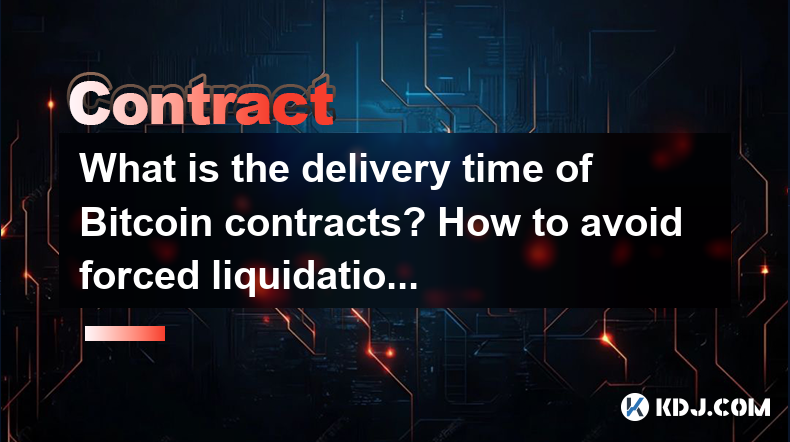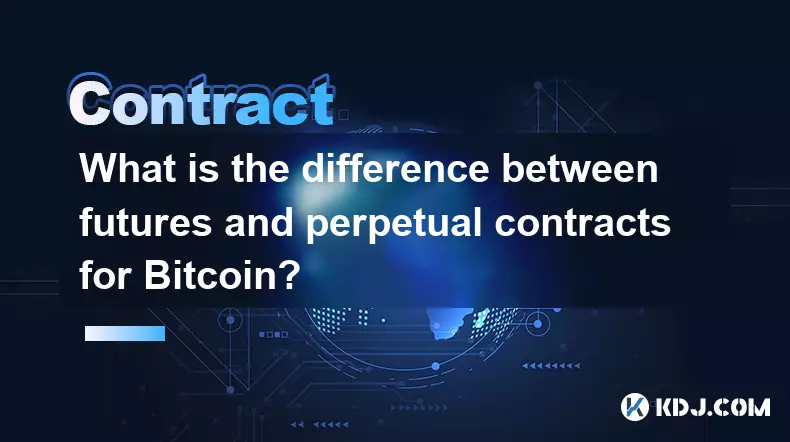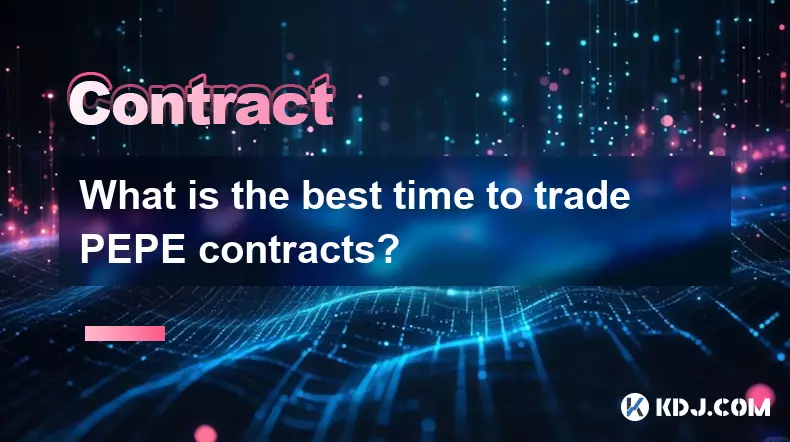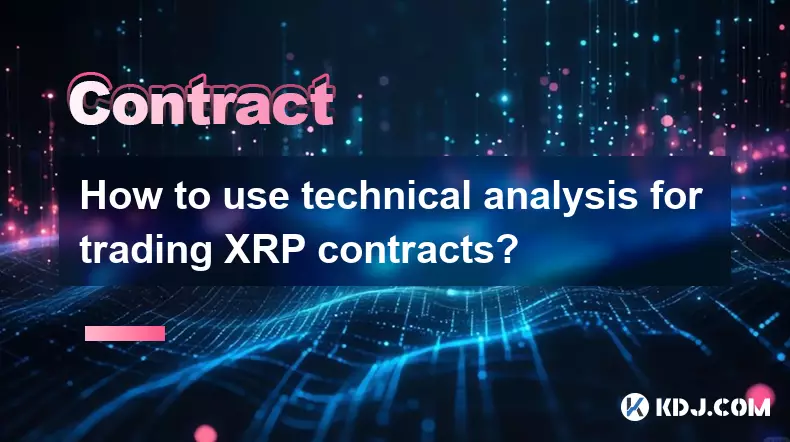-
 bitcoin
bitcoin $122288.232522 USD
0.16% -
 ethereum
ethereum $4480.662914 USD
-0.22% -
 xrp
xrp $2.962747 USD
-2.32% -
 tether
tether $1.000120 USD
-0.05% -
 bnb
bnb $1145.654223 USD
-2.07% -
 solana
solana $227.105217 USD
-1.67% -
 usd-coin
usd-coin $0.999548 USD
-0.02% -
 dogecoin
dogecoin $0.250875 USD
-2.04% -
 tron
tron $0.340654 USD
-0.49% -
 cardano
cardano $0.837968 USD
-2.52% -
 hyperliquid
hyperliquid $48.960449 USD
0.06% -
 chainlink
chainlink $22.049280 USD
-1.33% -
 ethena-usde
ethena-usde $1.000404 USD
0.02% -
 sui
sui $3.586212 USD
0.20% -
 avalanche
avalanche $29.894916 USD
-4.18%
What is the delivery time of Bitcoin contracts? How to avoid forced liquidation?
Bitcoin contracts' delivery time varies; futures expire on set dates, options if exercised. Avoid forced liquidation by monitoring margins, using stop-loss orders, and managing leverage.
May 03, 2025 at 06:42 am

Bitcoin contracts, often referred to as Bitcoin futures or options, are financial derivatives that allow traders to speculate on the future price of Bitcoin without owning the underlying asset. Understanding the delivery time of these contracts and how to avoid forced liquidation is crucial for any trader looking to navigate the volatile cryptocurrency market effectively.
Understanding Bitcoin Contracts
Bitcoin contracts are agreements to buy or sell Bitcoin at a predetermined price on a specific date in the future. These contracts can be categorized into futures and options. Futures contracts obligate the buyer to purchase and the seller to sell Bitcoin at the agreed-upon price and date. Options, on the other hand, give the buyer the right, but not the obligation, to buy or sell Bitcoin at the specified price before the contract expires.
Delivery Time of Bitcoin Contracts
The delivery time of Bitcoin contracts varies depending on the type of contract and the exchange on which it is traded. For futures contracts, the delivery time is typically set at the expiration date of the contract. This can range from a few days to several months, depending on the specific terms of the contract.
For example, on the Chicago Mercantile Exchange (CME), Bitcoin futures contracts have expiration dates that are set for the last Friday of the contract month. If a trader holds a position until the expiration date, they will either receive or deliver Bitcoin based on the contract's terms.
In contrast, options contracts have an expiration date as well, but the delivery of Bitcoin only occurs if the option is exercised. The delivery time for options can be more flexible, as the holder of the option can choose to exercise it at any time before the expiration date.
How to Avoid Forced Liquidation
Forced liquidation occurs when a trader's position is automatically closed by the exchange due to insufficient margin to cover potential losses. This can happen in highly volatile markets where the price of Bitcoin moves against the trader's position. To avoid forced liquidation, traders need to manage their risk effectively and maintain adequate margin levels.
Monitoring Margin Levels
Monitoring margin levels is essential for avoiding forced liquidation. Most exchanges require traders to maintain a minimum margin level, which is a percentage of the total value of the position. If the margin level falls below this threshold, the exchange may initiate a liquidation to cover potential losses.
- To monitor margin levels, traders should regularly check their account balances and the current market price of Bitcoin. Many trading platforms provide real-time margin level indicators that can help traders stay informed about their risk exposure.
Using Stop-Loss Orders
Using stop-loss orders is another effective strategy to avoid forced liquidation. A stop-loss order is an instruction to sell a position when the price reaches a certain level, helping to limit potential losses.
- To set a stop-loss order, traders can follow these steps:
- Log into the trading platform.
- Navigate to the open positions section.
- Select the position for which you want to set a stop-loss order.
- Enter the desired stop-loss price.
- Confirm the order.
Diversifying Trading Strategies
Diversifying trading strategies can also help mitigate the risk of forced liquidation. By spreading investments across different types of contracts and trading strategies, traders can reduce their exposure to any single position.
- For example, a trader might use a combination of long and short positions, as well as different expiration dates, to balance their portfolio. This diversification can help cushion the impact of adverse price movements in Bitcoin.
Managing Leverage
Managing leverage is crucial for avoiding forced liquidation. Leverage allows traders to control larger positions with a smaller amount of capital, but it also amplifies potential losses. Using too much leverage can quickly lead to margin calls and forced liquidation.
- To manage leverage effectively, traders should:
- Assess their risk tolerance and financial situation.
- Choose a leverage level that aligns with their risk management strategy.
- Regularly review and adjust leverage based on market conditions and account performance.
Staying Informed About Market Conditions
Staying informed about market conditions is vital for making informed trading decisions and avoiding forced liquidation. The cryptocurrency market is known for its volatility, and staying up-to-date with the latest news and trends can help traders anticipate potential price movements.
- To stay informed, traders can:
- Follow reputable cryptocurrency news sources.
- Join online communities and forums dedicated to cryptocurrency trading.
- Use technical analysis tools to identify potential market trends and patterns.
Frequently Asked Questions
Q: Can I extend the delivery time of a Bitcoin contract?A: The delivery time of a Bitcoin contract is set by the terms of the contract and cannot be extended. However, traders can roll over their positions to a new contract with a later expiration date if they wish to maintain their exposure to Bitcoin.
Q: What happens if I cannot meet a margin call?A: If you cannot meet a margin call, your position may be subject to forced liquidation. The exchange will automatically close your position to cover the losses, and any remaining funds in your account will be used to settle the transaction.
Q: Are there any fees associated with forced liquidation?A: Yes, exchanges may charge fees for forced liquidation to cover the costs of closing the position and settling the transaction. These fees can vary depending on the exchange and the specific terms of the contract.
Q: Can I avoid forced liquidation by using a different trading platform?A: While different trading platforms may have varying margin requirements and liquidation policies, the risk of forced liquidation is inherent in leveraged trading. To avoid forced liquidation, it is more important to focus on effective risk management strategies rather than switching platforms.
Disclaimer:info@kdj.com
The information provided is not trading advice. kdj.com does not assume any responsibility for any investments made based on the information provided in this article. Cryptocurrencies are highly volatile and it is highly recommended that you invest with caution after thorough research!
If you believe that the content used on this website infringes your copyright, please contact us immediately (info@kdj.com) and we will delete it promptly.
- BlockDAG, DOGE, HYPE Sponsorship: Crypto Trends Shaping 2025
- 2025-10-01 00:25:13
- Deutsche Börse and Circle: A StableCoin Adoption Powerhouse in Europe
- 2025-10-01 00:25:13
- BlockDAG's Presale Buzz: Is It the Crypto to Watch in October 2025?
- 2025-10-01 00:30:13
- Bitcoin, Crypto, and IQ: When Genius Meets Digital Gold?
- 2025-10-01 00:30:13
- Stablecoins, American Innovation, and Wallet Tokens: The Next Frontier
- 2025-10-01 00:35:12
- NBU, Coins, and Crypto in Ukraine: A New Yorker's Take
- 2025-10-01 00:45:14
Related knowledge

What is the difference between futures and perpetual contracts for Bitcoin?
Oct 02,2025 at 11:54pm
Understanding Bitcoin Futures Contracts1. Bitcoin futures are derivative instruments that allow traders to speculate on the future price of Bitcoin at...

What is the best time to trade PEPE contracts?
Oct 03,2025 at 11:54am
Understanding PEPE Contract Volatility1. PEPE contracts exhibit extreme price fluctuations due to their meme-based nature and low market cap. Trading ...

What are the common mistakes to avoid with Bitcoincoin contracts?
Oct 03,2025 at 08:54am
Emerging Trends in the Cryptocurrency Market1. Decentralized finance (DeFi) platforms continue to expand their influence across the blockchain ecosyst...

What is the maintenance margin for Bitcoin contracts?
Oct 02,2025 at 01:36am
Decentralized Exchanges Gain Momentum in 20241. Decentralized exchanges (DEXs) have seen a significant rise in trading volume, surpassing centralized ...

How to use technical analysis for trading XRP contracts?
Oct 03,2025 at 01:18pm
Understanding Price Patterns in XRP Futures1. Identifying chart patterns such as triangles, head and shoulders, and double tops or bottoms can provide...

What does "longing" PEPE contracts mean?
Oct 03,2025 at 11:54pm
Understanding Decentralized Exchanges in the Crypto Ecosystem1. Decentralized exchanges (DEXs) operate without a central authority, allowing users to ...

What is the difference between futures and perpetual contracts for Bitcoin?
Oct 02,2025 at 11:54pm
Understanding Bitcoin Futures Contracts1. Bitcoin futures are derivative instruments that allow traders to speculate on the future price of Bitcoin at...

What is the best time to trade PEPE contracts?
Oct 03,2025 at 11:54am
Understanding PEPE Contract Volatility1. PEPE contracts exhibit extreme price fluctuations due to their meme-based nature and low market cap. Trading ...

What are the common mistakes to avoid with Bitcoincoin contracts?
Oct 03,2025 at 08:54am
Emerging Trends in the Cryptocurrency Market1. Decentralized finance (DeFi) platforms continue to expand their influence across the blockchain ecosyst...

What is the maintenance margin for Bitcoin contracts?
Oct 02,2025 at 01:36am
Decentralized Exchanges Gain Momentum in 20241. Decentralized exchanges (DEXs) have seen a significant rise in trading volume, surpassing centralized ...

How to use technical analysis for trading XRP contracts?
Oct 03,2025 at 01:18pm
Understanding Price Patterns in XRP Futures1. Identifying chart patterns such as triangles, head and shoulders, and double tops or bottoms can provide...

What does "longing" PEPE contracts mean?
Oct 03,2025 at 11:54pm
Understanding Decentralized Exchanges in the Crypto Ecosystem1. Decentralized exchanges (DEXs) operate without a central authority, allowing users to ...
See all articles










































































